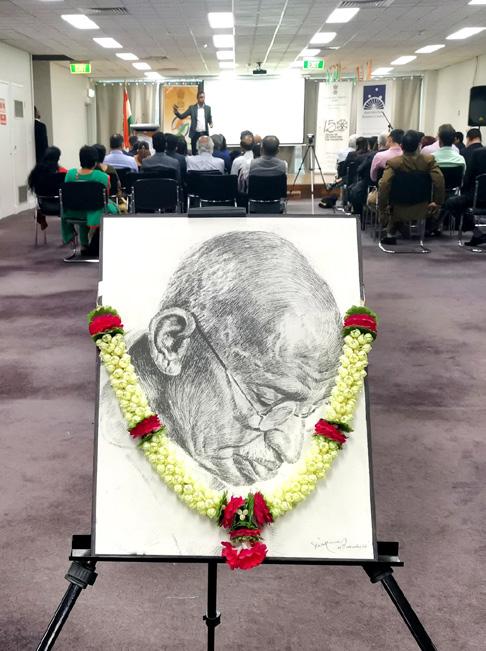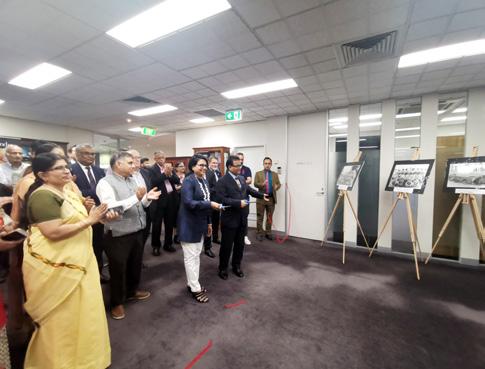
2 minute read
A photographic tribute, and lessons in relevance The Consulate General of India (Melb) marks Gandhiji’s sesquicentennary
from 2019-10 Melbourne
by Indian Link
BY KHUSHBOO PATODIA GUPTA
Indians the world over have marked a special Gandhi Jayanti this year, his 150th. Sesquicentennial celebrations have taken the form of talks, discussions, film screenings, stage productions, exhibitions and commemorations.
Here in Melbourne, the Consulate General of India chose to present a photographic tribute, and a talk on the contemporary significance of Gandhi’s leadership style.
An exhibition showcasing photographs from the life of Mohandas Karamchand Gandhi and his quest for Indian independence was launched on 2 Oct. Inaugurated by Member of Parliament Kaushalya Vaghela, the exhibition was open to the public for a week.


“I am very proud to say that I am from the same state as Gandhiji,” Vaghela said on the occasion. “This particular leader led with truth and non-violence. So many world leaders say that they get inspiration from Mahatma Gandhi. In fact, 100 nations have released stamps of Mahatma Gandhi.”
The photos allowed us to step inside Gandhi’s world, as we saw him across the country in Ahmedabad, Shantiniketan, Bihar and other spots. One of the more endearing pics was a well-known one of him with a 6-year-old Indira Gandhi in 1924. Smiling ear to ear even as he fasted for 21 days as a penance for communal disturbances, the grit and determination despite the frailty came through loud and clear.
Another intriguing image was of Gandhi in South Africa in 1906, as leader of the
Indian stretcher-bearer corps during the Zulu Rebellion.
In yet another image, he appeared deeply engrossed inwards, at a public prayer meet in New Delhi’s Birla House in 1948, perhaps a few days before he was assassinated there.
Gandhi’s favourite hymn Vasihnav Jana to set the mood for the afternoon. Melodiously sung by speaker and author Sriram Iyer, the song written by Narsin Mehta resonates with Gandhi’s own ideologies of truth, equality, compassion and tolerance.
These are values we need to re invigorate in our contemporary lives, as Consul General Raj Kumar pointed out.
“Gandhiji never wanted to influence through his life, but his life itself became an inspiration,” he said in his reflection.
“I believe as long as Gandhiji’s philosophy remains embedded in humanity, he will remain relevant. The path which he has shown us of truth and non-violence, it’s still valid in the present day when the world faces many challenges including terrorism.” But how did his belief systems and his behavior ultimately help India achieve independence?
Speaker Sriram Iyer explained in an interactive talk entitled ‘Belief in Leadership - the Gandhi Way’, that the Mahatma used his own strong faith in non-violence, noncooperation and satyagraha to influence his followers positively, so that they could be on the same page as him. Putting this in contemporary context, Iyer suggested using the framework of belief, behavior and business. He explained through the life of the Mahatma, how our beliefs shape our behavior and ultimately the outcome of the work we are doing, just like Gandhi who had very strong beliefs, which determined his behavior, and the result that he was after - to free India - was a natural byproduct of that.
“This is one man, if he were alive today, who could have walked into the CEO role of any large conglomerate, just as easily as he led a nation, if he wanted to. He showed exemplary leadership in every stage, every arena of his life,” said Iyer.
One of the greatest leaders the world has seen, Gandhi led with trust, and walked with his people hand in hand.
To those who question the relevance of the Mahatma in modern times, this is but one of the many lessons we can still learn from him.








